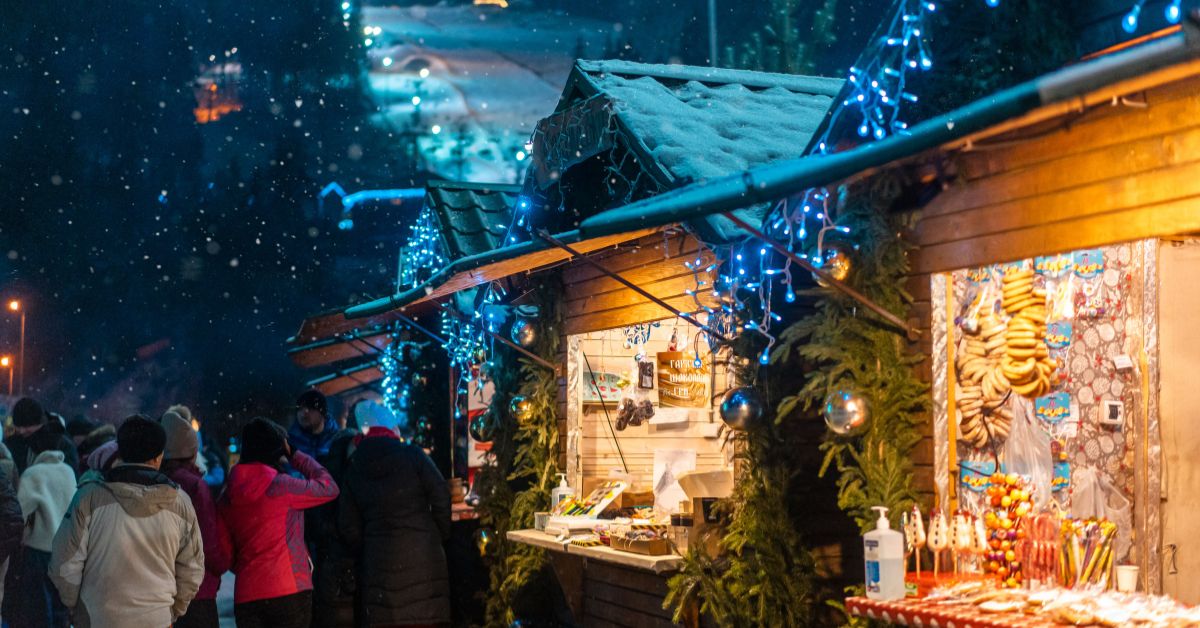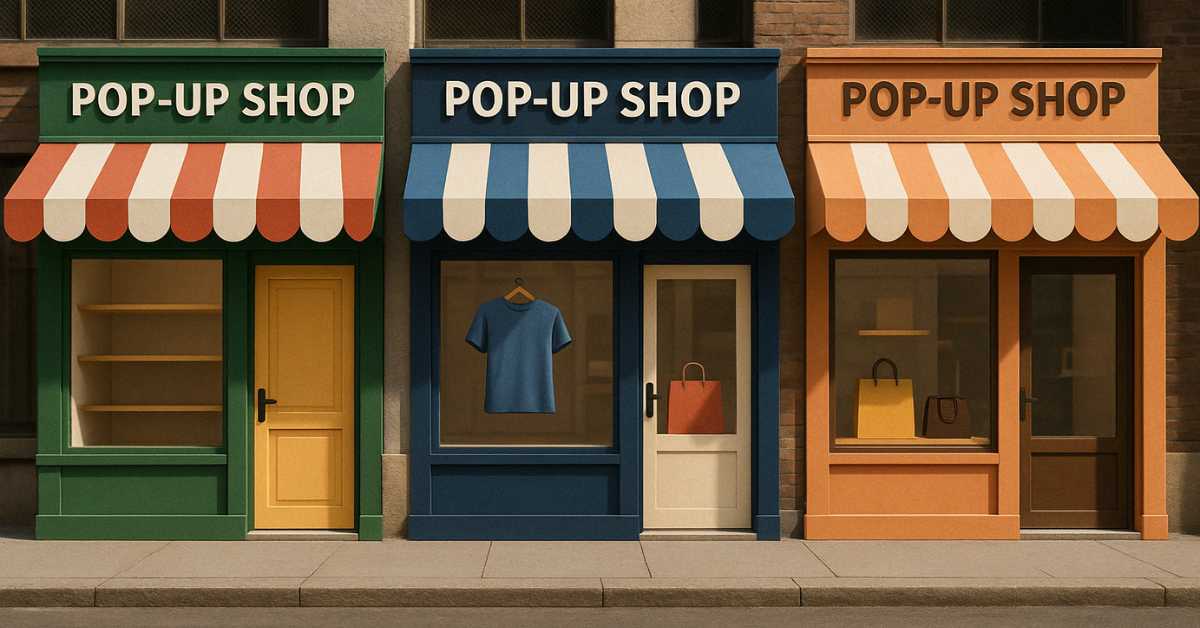In the ever-evolving retail landscape, pop-up stores have carved out a significant niche, providing brands with a flexible platform to engage customers, test new markets, and boost brand awareness. With their ability to pop up anywhere, from bustling city centers to serene suburban locales, these temporary retail spaces are changing how retailers think about selling spaces. As we look to the future, several emerging trends are poised to redefine the pop-up retail scene, making it more dynamic and integrated with cutting-edge technologies.
Personalized Experiences through Data-Driven Insights
In the retail domain, particularly within the context of pop-up stores, the utilization of data-driven insights to craft personalized experiences has become a cornerstone strategy for enhancing consumer engagement and increasing sales. Pop-up retailers are tapping into advanced analytics and machine learning algorithms to gather and interpret vast amounts of data on consumer behavior, preferences, and purchase history. This approach enables them to offer uniquely tailored shopping experiences that resonate on a personal level with each visitor.
The essence of personalization in pop-up retail revolves around understanding the subtle nuances of customer interactions. By employing technologies such as anonymous video analytics (AVA), retailers can track not only the number of store visitors but also their movement patterns, dwell times, and interaction with merchandise. This data, when processed in real time, provides valuable insights that allow brands to adjust their displays, promotions, and product placements dynamically to better cater to the current audience’s preferences.
Moreover, personalization extends beyond physical layout adjustments. It encompasses targeted marketing communications and personalized product recommendations. For instance, AI-driven systems can analyze a customer’s past purchases and browsing behaviors to predict what products might interest them in the future. When this technology is integrated into a pop-up store’s operational framework, it can trigger customized email or mobile notifications about products available at the pop-up that would likely appeal to the individual.
The impact of personalized experiences is profound. Consumers are more likely to visit a pop-up store if they know that the products on offer are aligned with their tastes and needs. Once inside, personalized interactions foster a deeper connection between the customer and the brand, enhancing satisfaction and loyalty. Furthermore, personalization strategies help in optimizing inventory management, as brands can stock products that are more likely to sell, based on predictive data analytics.
The benefits of using data-driven insights in pop-up retail also extend to post-event analysis. Brands can gather data on which products were most popular, which promotions drove more traffic, and how changes in the store layout affected customer behavior. This ongoing cycle of data collection, analysis, and application ensures that each pop-up event is more successful than the last, continually refining the approach to customer engagement.
The role of data-driven insights in crafting personalized experiences in pop-up retail cannot be overstated. As technology advances, the ability to collect, analyze, and act on data in real time is becoming more sophisticated, allowing brands to create highly personalized and engaging shopping environments. These personalized experiences not only enhance customer satisfaction and loyalty but also drive higher sales, proving that the right information in the right hands can transform the transient nature of pop-up stores into enduring customer relationships.
Integration with Omnichannel Strategies
In today’s retail ecosystem, integration with omnichannel strategies is vital for the success of pop-up stores. This approach involves creating a seamless shopping experience for the customer, regardless of whether they are shopping online from a mobile device, a laptop, or physically visiting the pop-up store. For brands using pop-up retail as part of their strategy, integration with omnichannel approaches is not just an enhancement—it’s a necessity for delivering consistent, efficient, and engaging consumer experiences across all platforms.
An effective omnichannel strategy ensures that all channels are interlinked so that each customer interaction complements the others, thereby increasing the overall efficiency of the customer journey. For example, a customer might see a product in an online advertisement, check it out in a physical pop-up store, and later purchase it online. Each step in this process should be smooth and interconnected, with consistent messaging, pricing, and branding.
Pop-up stores offer a unique opportunity to amplify the omnichannel experience. They can serve as physical touchpoints where customers engage directly with products they might have seen online. For brands, this means integrating technologies that enhance both digital and physical interactions. Utilizing QR codes, augmented reality, or mobile apps in the pop-up store can bridge the gap between online and offline channels. Customers could scan a QR code to read reviews, check stock in real-time, or get detailed product information, enriching the physical experience with online data.
Furthermore, integrating with omnichannel strategies involves leveraging customer data to provide a unified shopping experience. This could mean recognizing a customer’s online profile when they make a purchase in a pop-up store, allowing for personalized service such as recommendations based on previous online behavior. Loyalty programs are particularly effective as they can be used to track customer interactions across channels, offering rewards that are redeemable both online and offline.
Inventory visibility is another critical aspect of omnichannel integration. Customers expect to view product availability in real-time, regardless of where they are shopping. For pop-up stores, this means integrating inventory systems with online platforms to display accurate stock levels. This transparency helps in managing customer expectations and enhances their shopping experience by reducing the friction associated with out-of-stock products.
Advanced Technology Implementation
The implementation of advanced technology in pop-up retail is revolutionizing the way brands engage with their customers, providing dynamic and immersive experiences that were once the stuff of science fiction. Augmented reality (AR) and virtual reality (VR) are at the forefront of this transformation, allowing customers to interact with products in entirely new ways. AR, for example, can enable shoppers to see how a piece of furniture would look in their home or how a dress might fit without physically trying it on. This not only enhances the shopping experience but also significantly reduces the barrier to purchase.
Similarly, virtual reality can transport shoppers to different environments where they can experience products under various conditions. Imagine trying out camping gear in a simulated forest environment or exploring a virtual kitchen to test home appliances. These technologies create a memorable experience that can drive sales and increase brand loyalty.
Moreover, pop-up shops are integrating IoT (Internet of Things) devices to streamline operations and gather data on consumer behavior. Smart mirrors, interactive displays, and RFID tags help personalize the shopping experience and manage inventory more effectively. These devices can provide real-time data back to the retailer about which items are attracting the most attention and which are being ignored, allowing for on-the-fly adjustments to displays and stock.
The integration of these technologies into pop-up retail not only captivates customers but also provides a wealth of data that brands can use to refine their strategies and offerings. As these technologies continue to evolve and become more affordable, their adoption within pop-up retail environments is expected to increase, setting a new standard for customer engagement.
Sustainability and Community Focus
Sustainability and community focus are becoming increasingly important in pop-up retail as brands strive to connect with consumers on a deeper level. Many pop-up shops are now using eco-friendly materials and practices in their design and operations, reflecting a commitment to environmental responsibility. This can include the use of recycled materials in the construction of the pop-up shop, energy-efficient lighting, and zero-waste practices during the event.
Additionally, many pop-up stores are partnering with local artisans and producers to offer unique, locally-sourced products that support the local economy. This not only helps reduce the carbon footprint associated with shipping goods long distances but also appeals to consumers’ growing preference for supporting local businesses.
Community-focused pop-ups also serve as a platform for local artists, craftsmen, and entrepreneurs to showcase their products and services, often accompanied by events like workshops, talks, and performances that celebrate local culture. This approach not only drives traffic to the pop-up but also fosters a sense of community and connectedness among visitors.
By emphasizing sustainability and community, pop-up retailers can build brand trust and loyalty, particularly among younger consumers who prioritize corporate social responsibility. These initiatives show that the brand not only cares about making a profit but also about making a positive impact on the world.
Experiential and Event-Driven Pop-Ups
Experiential and event-driven pop-ups are designed to offer more than just physical products; they provide experiences that engage and excite shoppers. These pop-ups focus on creating an atmosphere that immerses customers in the brand’s world, offering them a chance to participate in something unique and memorable. This could range from interactive installations and exclusive performances to workshops and demonstrations that align with the brand’s identity and values.
For instance, a beauty brand might host a pop-up that includes mini makeovers, tutorials by makeup artists, and free samples, turning a regular shopping trip into a bespoke event. Similarly, a fitness brand might set up a temporary gym where visitors can try out classes and equipment, supplemented by health and wellness workshops.
These types of pop-ups often generate considerable buzz on social media, as attendees are eager to share their experiences with their networks. This not only amplifies the reach of the pop-up but also enhances the brand’s image as innovative and customer-centric.
Ultimately, experiential and event-driven pop-ups serve as powerful marketing tools that can convert casual browsers into loyal customers, deepen consumer relationships, and generate significant media exposure. By focusing on the quality of the experience rather than just the products, brands can create meaningful connections that resonate with consumers long after the pop-up has ended.
The landscape of pop-up retail is continually evolving, shaped by advances in technology and shifts in consumer expectations. Brands that can adapt to these changes, embrace new technologies, and focus on creating personalized, omnichannel, and sustainable shopping experiences will thrive in this dynamic environment. As we look to the future, the pop-up retail model offers limitless possibilities for innovation, engagement, and growth, proving that even the most temporary setup can leave a lasting impact on the retail world.




